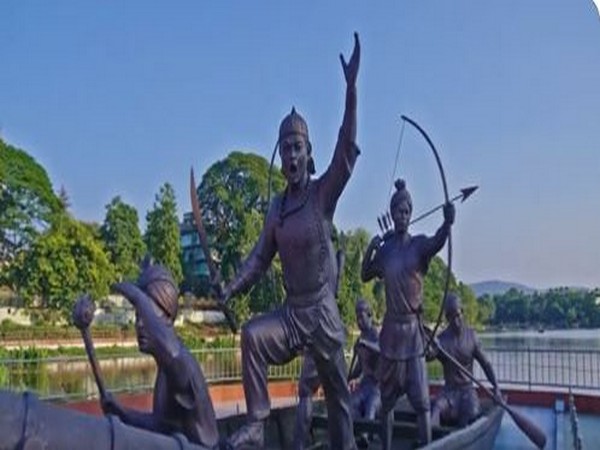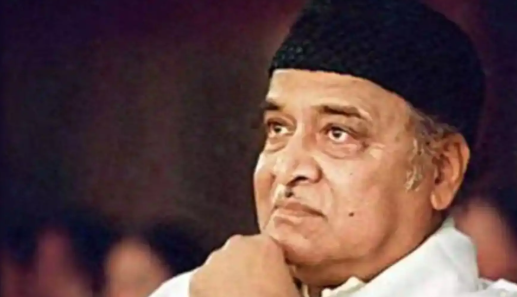Introduction
The Battle of Alaboi, fought on August 5, 1669, was a significant conflict between the Ahom Kingdom and the Mughal Empire near the Alaboi Hills in present-day Dadara, Kamrup District, Assam, India. This intense battle is remembered for the bravery and sacrifice of the Ahom warriors, who fought fiercely to protect their homeland. Despite a Mughal victory, the battle set the stage for the Ahoms’ ultimate triumph in the Battle of Saraighat in 1671. This guide explores the history, key events, and legacy of the Battle of Alaboi in simple words.
Background of the Battle of Alaboi
The Ahom Kingdom, established in 1228 by Sukaphaa, ruled Assam for nearly 600 years. By the 17th century, the Ahoms faced repeated invasions from the Mughal Empire, which sought to expand its control over the Brahmaputra Valley. In 1667, the Ahoms, led by the legendary general Lachit Borphukan, recaptured Guwahati from the Mughals. In response, Mughal Emperor Aurangzeb sent Raja Ram Singh I of Amber to reclaim the region, leading to a series of conflicts, including the Battle of Alaboi.
Why Did the Battle Happen?
The Mughals wanted to control Assam, particularly Guwahati, a strategic location along the Brahmaputra River. The Ahoms, determined to protect their independence, resisted fiercely. Tensions escalated when Ram Singh I challenged Ahom king Chakradhwaj Singha to a single combat, promising to retreat if defeated. Chakradhwaj Singha rejected the challenge, calling Ram Singh a mere servant, and ordered his forces to attack the Mughals instead.
Key Events of the Battle of Alaboi
The Battle of Alaboi was a fierce and bloody clash, marked by strategic moves and heavy losses. Here’s what happened:
1. The Setup
The Mughals, led by Ram Singh I, positioned their army near the Alaboi Hills, close to Dalbari and Pacharia. The Ahoms, under Lachit Borphukan, prepared to defend their territory. Ram Singh proposed a battle where 10,000 Mughal soldiers would face 20,000 Ahom cavalry. However, the Ahoms sent 40,000 troops, using clever tactics like dressing their archers and musketeers as Brahmins to deter the Rajput warriors from attacking. The Mughals countered by placing a female warrior, Madanavati, dressed as a man, to lead their vanguard, aiming to diminish the Ahoms’ glory if they won.
2. The Clash
On August 5, 1669, the two armies clashed on the plains south of Alaboi Hills. The battle was brutal, with the Mughals gaining the upper hand. Despite the Ahoms’ larger numbers and tactics, they suffered a devastating defeat. Around 10,000 Assamese soldiers lost their lives, marking a tragic moment in Assam’s history. The Mughals’ superior cavalry and psychological strategies contributed to their victory.
3. Aftermath
The Ahom defeat at Alaboi was a significant blow, deeply affecting King Chakradhwaj Singha, who died shortly after in 1669. His brother, Udayaditya Singha, succeeded him. The loss demoralized the Ahom forces, but Lachit Borphukan remained determined. Ram Singh I tried to negotiate peace, even attempting to bribe Ahom commanders, but the Ahoms refused to surrender Guwahati. The battle set the stage for renewed conflicts, leading to the decisive Battle of Saraighat, where the Ahoms would emerge victorious.
Why the Battle of Alaboi Matters
The Battle of Alaboi is a symbol of Assamese courage and resilience. Despite the heavy loss of 10,000 warriors, the Ahoms’ spirit remained unbroken, inspiring future victories. The battle highlighted Lachit Borphukan’s leadership and the Ahoms’ determination to defend their homeland. It also showcased the strategic importance of Assam’s terrain, which the Ahoms later used to their advantage in Saraighat.

Legacy and Remembrance
Today, the Battle of Alaboi is commemorated as a testament to the sacrifice of Assamese warriors. On August 5, 2025, leaders and citizens across Assam paid tribute to the martyrs, with posts on X reflecting pride in their bravery. A war memorial, featuring a 100-foot Hengdang (Ahom sword), is being built in Kamrup to honor the 10,000 soldiers who died. This memorial stands as a tribute to Assam’s rich history of valor.
Key Figures in the Battle
- Lachit Borphukan: The Ahom general who led the forces and later became a hero in the Battle of Saraighat. His leadership, despite the Alaboi defeat, inspired the Ahoms to keep fighting.
- Chakradhwaj Singha: The Ahom king who rejected Ram Singh’s duel challenge and ordered the attack, but died soon after the battle.
- Raja Ram Singh I: The Mughal commander who won at Alaboi but failed to secure lasting control over Assam.
- Udayaditya Singha: Chakradhwaj’s brother, who took over as king and continued the fight against the Mughals.
Interesting Facts About the Battle of Alaboi
- The battle saw unique tactics, like the Ahoms dressing soldiers as Brahmins and the Mughals using a female warrior to lead their vanguard.
- The loss of 10,000 soldiers in a single day is one of the heaviest tolls in Assam’s military history.
- The Alaboi defeat motivated Lachit Borphukan to refine his strategies, leading to the Ahoms’ victory in the naval Battle of Saraighat in 1671.
- The battle is often called a “prequel” to Saraighat, as it shaped the Ahoms’ determination to resist Mughal expansion.
Why You Should Know About the Battle of Alaboi
The Battle of Alaboi is more than a historical event—it’s a story of sacrifice, courage, and resilience. It reminds us of the Ahom warriors’ dedication to protecting their land and culture. Learning about this battle helps us appreciate Assam’s rich history and the legacy of leaders like Lachit Borphukan, whose valor is celebrated with a gold medal awarded annually to the best cadet at the National Defence Academy.
FAQs About the Alaboi War Memorial
Where is the Alaboi War Memorial being built?
The Alaboi War Memorial, also known as “Alaboi Ranakshetra,” is being constructed in Alaboi, Kamrup District, near Dadara in North Guwahati, Assam, on the outskirts of the state capital, Guwahati. The site spans 75 bighas of land near the Alaboi Hills, where the battle was fought in 1669.
Who is building the Alaboi War Memorial?
The Assam government is overseeing the construction of the Alaboi War Memorial, with the project managed by the state’s Public Works Department (PWD), North Kamrup Territorial Building Division, Rangia, Kamrup. The initiative was announced by Chief Minister Himanta Biswa Sarma, who shared a 3D model of the memorial in 2022. The memorial, costing Rs 150 crore, is a tribute to the 10,000 Ahom soldiers who died in the battle.
What is the main feature of the Alaboi War Memorial?
The centerpiece of the memorial is a 100-foot-tall Hengdang (Ahom sword), symbolizing the valor and sacrifice of the Ahom warriors. The memorial also includes a maidam (traditional Ahom burial mound) to honor the martyr.
Why is the Alaboi War Memorial being built?
The memorial is being built to honor the 10,000 Ahom soldiers who sacrificed their lives in the Battle of Alaboi on August 5, 1669. It aims to preserve the legacy of the Ahom dynasty and highlight their resistance against Mughal expansion, ensuring this significant chapter in Assam’s history is remembered.
Conclusion
The Battle of Alaboi, fought on August 5, 1669, was a tragic yet pivotal moment in Assam’s history. Though the Ahoms faced a crushing defeat, losing 10,000 brave soldiers, their spirit of resistance paved the way for their ultimate victory in the Battle of Saraighat. The legacy of Alaboi lives on through memorials, tributes, and the enduring pride of the Assamese people. Want to learn more about Assam’s heroic past? Share your thoughts or questions in the comments below!
Also See: The Battle of Saraighat: Assam’s Epic Victory over the Mughals
Also See: National Waterways of India: Recent Developments and Benefits





